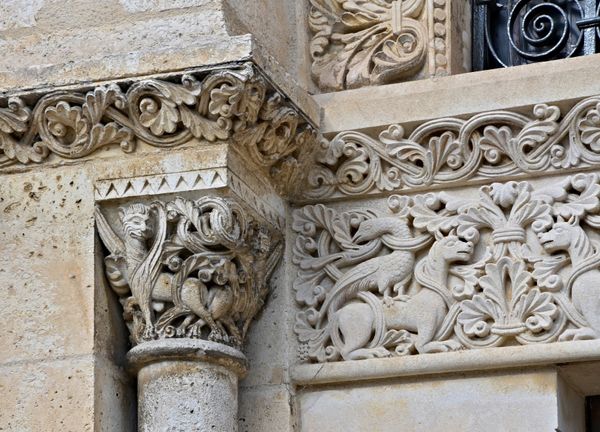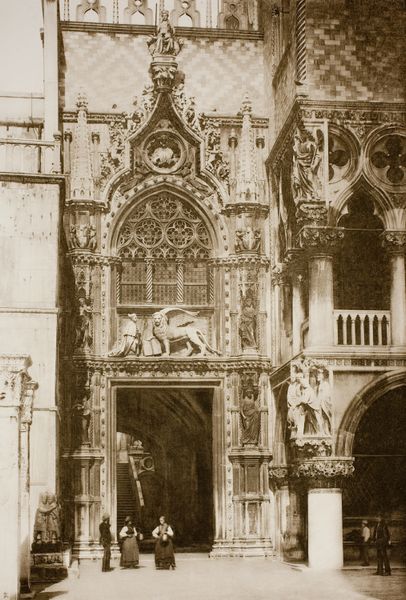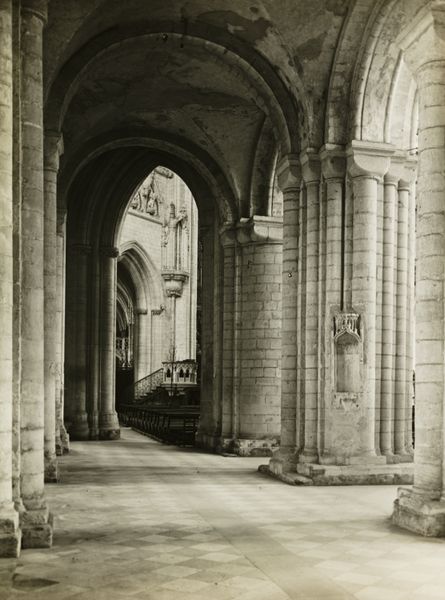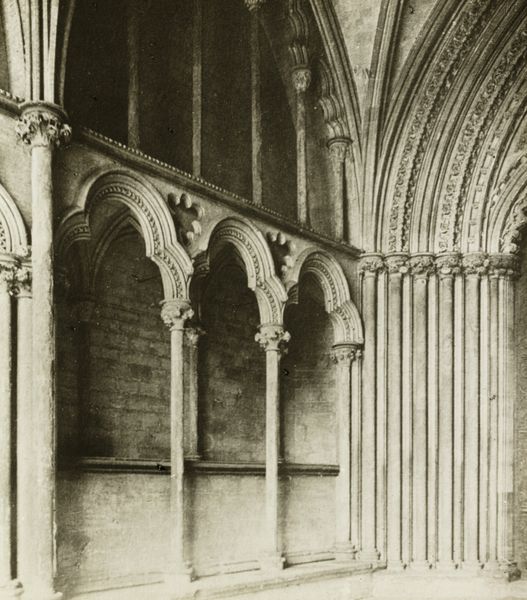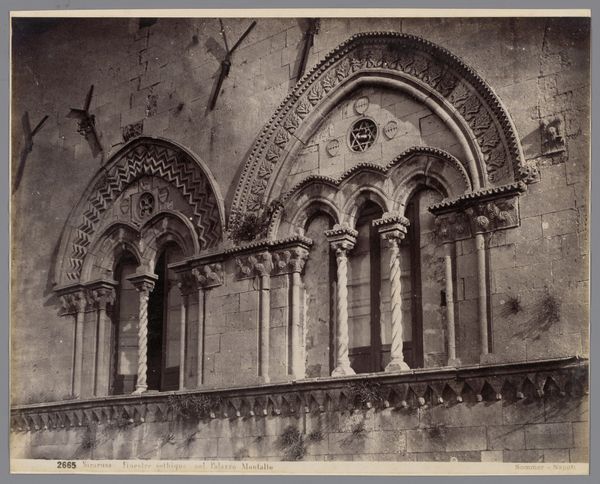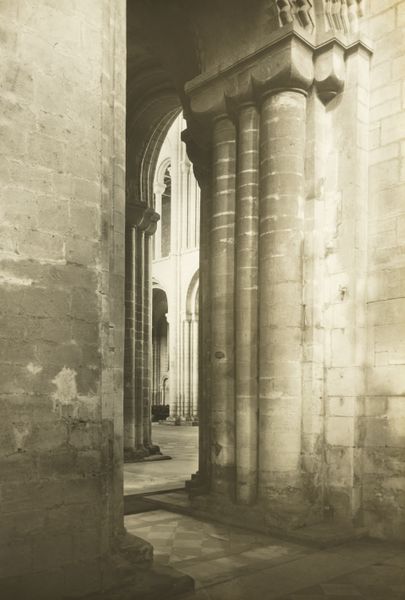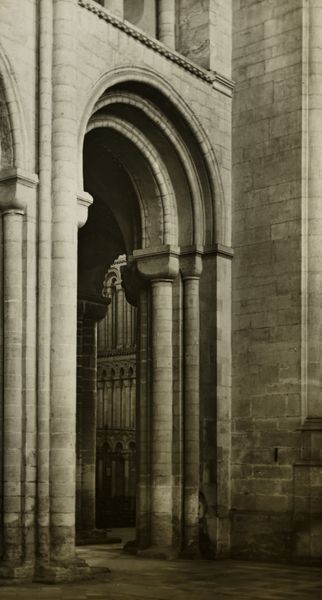
Dimensions: 8.2 × 8.2 cm
Copyright: Public Domain
Editor: This is a photograph by Frederick H. Evans, taken around 1891, titled "Ely Cathedral: Lady Chapel, details." It focuses on the intricate sculptural details within the chapel. What strikes me most is how the light emphasizes the dense ornamentation, creating a sense of both grandeur and almost claustrophobic detail. What do you see when you look at this, considering the historical context? Curator: I see a deliberate act of preservation and interpretation through the lens of Pictorialism. Evans, working within this late 19th-century aesthetic movement, wasn't merely documenting the architecture. He was making a statement about the spiritual and cultural values embedded within Gothic architecture during a time of rapid social change. Consider the Arts and Crafts movement, which championed handcrafted work against industrial production – might this resonate with Evans's choice to focus on the hand-carved details? Editor: Absolutely. It seems like he's emphasizing the human touch, the artistry that's often overlooked in grand structures like cathedrals. The soft focus also seems to reinforce that idea, making it feel more dreamlike and less like a straightforward architectural record. Curator: Precisely. And what does it mean to isolate the "Lady Chapel," dedicated to the Virgin Mary? Within the historical context of patriarchal religious institutions, does the artistic focus on female divine power invite dialogue with feminist theories? Are we, through Evans' eyes, seeing an active claim for female inclusion or at least a quiet commentary on the role of women, present and absent, within religious spaces? Editor: That's a really compelling angle. I hadn't thought about the deliberate highlighting of the Lady Chapel in that way. It does open up a whole new level of interpretation, considering power dynamics. Curator: Photographic choices are never neutral. By framing these particular details, Evans implicitly engages with larger questions of faith, gender, and artistic value, which we can examine today through many lenses including a feminist approach. Editor: It's amazing how a seemingly simple architectural photograph can be so rich with meaning. Thanks for helping me see beyond the surface details. Curator: It’s been a pleasure to explore those ideas. Now it’s my turn to thank you.
Comments
No comments
Be the first to comment and join the conversation on the ultimate creative platform.



